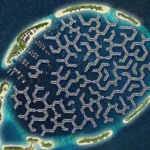When a black swan event occurs globally, people tend to remember it in two different ways. One is a collection of public records that are assembled to form history. The other is stored in each person’s mind as a piece of their unique narrative. The events of December 27, 2007, were a typical illustration of a black swan disrupting planned reality. Millions of lives were upended in one catastrophic day by unforeseen circumstances.
Pakistan changed the day we lost Benazir Bhutto. It was required. However, Pakistan’s tale also evolved. After living in exile for over ten years, she returned to Pakistan several decades ahead of her time.
On this day, bits and pieces of both a public and personal history come to the surface like unshed tears. In the noonday electric blackness, what caught your attention? Many wonder what motivated her to keep going down her dangerous road. If she hadn’t been stolen from us, where would we be today?
First of all, everything went wrong from the start, at least from the moment her car and I left for the Liaqat Bagh Jalsa. The end of the campaign was in sight. The terror assault on October 18 left us reeling with the loss of so many lives and the disfigurement of so many young people; it was like having a constant aftertaste of ashes in our mouths.
However, the PPP and her core team had decided to be resilient as a group.Her acts essentially served as a lesson in singularity. Nobody—not even the regime or terrorists—could influence her agenda. Not fear, of course. Through pure willpower, she had regained political momentum and agency, and over many of the campaign’s days, that vitality had permeated all of us. Thus, even though it was supposed to be a better day, it never felt that way. A bug existed in the matrix. The blue December air of Rawalpindi seemed to have a new sharpness to it, and many of us felt it instead of the usual exhilaration that follows the conclusion of a war like this, despite all the odds. Her party security squad halted the cars and rearranged them in a tighter box configuration at a traffic light, headed by Touqeer Kaera, Shaheed, on the ground. When the cars arrived at the location, her volunteers gave off a very tense vibe, obviously feeling more than just the typical sense of unease.
The jalsa took on a life of its own after it reached Liaqat Bagh, as happens to public events when they naturally transform into a different energy. The foreign press gushed about Benazir Bhutto; she was radiant, and the energized throng responded to an almost electric nimbus that day. It was clear that she was also at her best. Before things didn’t go back to normal, it appeared as though they might.
Not long after we strolled carefully inside the Bagh’s gates, disaster struck. The sound of gunfire was followed by the heavy automobiles springing up from the power of the bomb strike, and all of a sudden there was broken steel and glass everywhere. For a few hours, it felt like October 18 because of the ringing in the ears, the blood, the sulfur, and the mayhem in the atmosphere. Still, it was worse in some respects. The horror of losing her again struck home, ripping a hole in the heart among the shock of smoke and broken limbs.
Now, fifteen years after her terrible murder, we are facing another election season in December, and her absence is very much felt. Not just the party feels the loss. People continue to sadly inquire about the life we could have all had—especially my progressive Pakistani colleagues—everywhere I go if she hadn’t been killed in her prime. She is still recognized in international forums as the only Muslim woman to overcome such great obstacles to be chosen as prime minister twice. Her governments were overthrown unfairly and abruptly in both instances, and she was never given the chance to realize her goals for Pakistan.
Benazir Shaheed did not really possess a magic wand. Aside from her legendary stature and unwavering bravery, she possessed a strong work ethic, an institutionalized system for leading her party in extremely structured meritocratic pyramids, and a strong desire for ideas that would improve the lives of the most vulnerable. She also possessed executive follow-through, a rare and underappreciated trait among statemen. For instance, the BISP is one example. Her policy committees met throughout the year, sent her the minutes of their sessions, and she would reply with detailed feedback and instructions on how to proceed with refining ideas into workable policies.
The income support program became a cornerstone of the PPP’s legacy. However, President Zardari recalled her enthusiasm for it and insisted that it be tailored for women who were part of vulnerable families, despite the bureaucracy’s initial strong opposition. Bilawal Bhutto Zardari, who oversaw the start of one of the largest redistributions of land assets following the 2022 floods by granting land titles of restored homes to women of impacted households, is one of the people who continues this heritage of empowering women at the bottom of the social pyramid.
There was no time for strategic digression for her. In 2007, she believed Pakistan could no longer afford to fumble through political experiments that resulted in unaccountable administrations in power. She prioritized intellectual capital as a means of enacting transformation because of this, especially for a nation stuck in neutral with growing social, economic, and environmental issues. While we spent six months working on her manifesto, we also created a 100-day plan for Pakistan at her request, outlining the government’s priorities for each ministry. This is the reason the administration established in her honor in 2008 passed the most rights laws, implemented historic initiatives like the nation’s social transfer system, and reinstated the 1973 constitution in its original form.It succeeded in driving the nation’s exports to record highs while fostering an agricultural boom that made Pakistan sufficiently self-sufficient in food to export wheat. All of this had been planned by her







